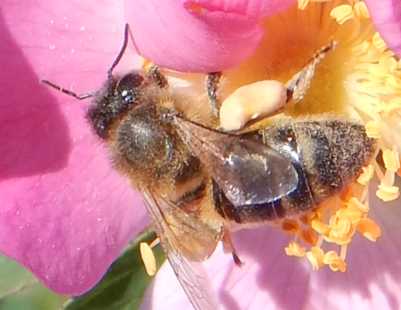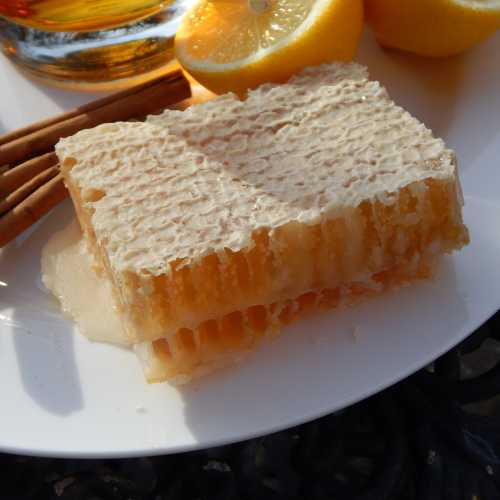Bee Enzyme
The bee enzyme is crucial in the making of honey by
honey bees, and it is the bees' own magical and unique ingredient that is added to the nectar they gather from flowers.
Honey is the food store of honey bees, and is a method of gathering and storing nectar so that they may continue to feed during cold winter weather, when there are fewer flowers on which to forage for nectar.
To explain the importance of the bee enzyme, let's take a quick look at the process of honey making by the bees.
The process of making honey begins when worker honey bees gather nectar from flowers. As the bee gathers nectar using its proboscis, nectar is passed along the oesophagus to the honey sac, which is a distension of the oesophagus – also known as the honey stomach.

It is in the honey stomach that the process of converting nectar into honey, begins.
In the honey stomach, the nectar is mixed with what is known as the bee enzyme called invertase, and it is this which starts to transform the raw nectar’s sucrose (a disaccharide – two sugars) into dextrose (glucose) and levulose (fructose) which are mono-sacharides (basic sugars).
These sugars form the bulk of what we call ‘honey’, although there are also many minor complex sugars.

The
worker honey bees return to the bee hive or nest with a full honey
stomach. The digested nectar and bee enzyme solution is then
regurgitated from the mouths of the forager (worker) bees into the
mouths of house bees.
The house bees reduce the moisture
component of the mixture by ingesting and regurgitating it, then
depositing it into the honeycomb cells.
After this, the bees fan
the honey, to reduce the water content further. When the bees decide
the honey is ready, it is ‘capped’. It is the capping of honey that is a
signal to beekeepers, who will then take some of the honey stores.
One
of the interesting characteristics of honey, is that it contains its
own natural preservatives. During the process of conversion into honey,
a gluconic acid is also produced. The gluconic acid ensures the
honey has a low pH (acidic), which prevents bacteria, organisms, fungi and mould
from growing. In addition, hydrogen peroxide is also produced, which
again has anti-bacterial properties.
If you found this page helpful or interesting, I'd really be grateful if you would share it with others - if not this page, perhaps another, such as Gardening For Bees.
Thank you so much :) .